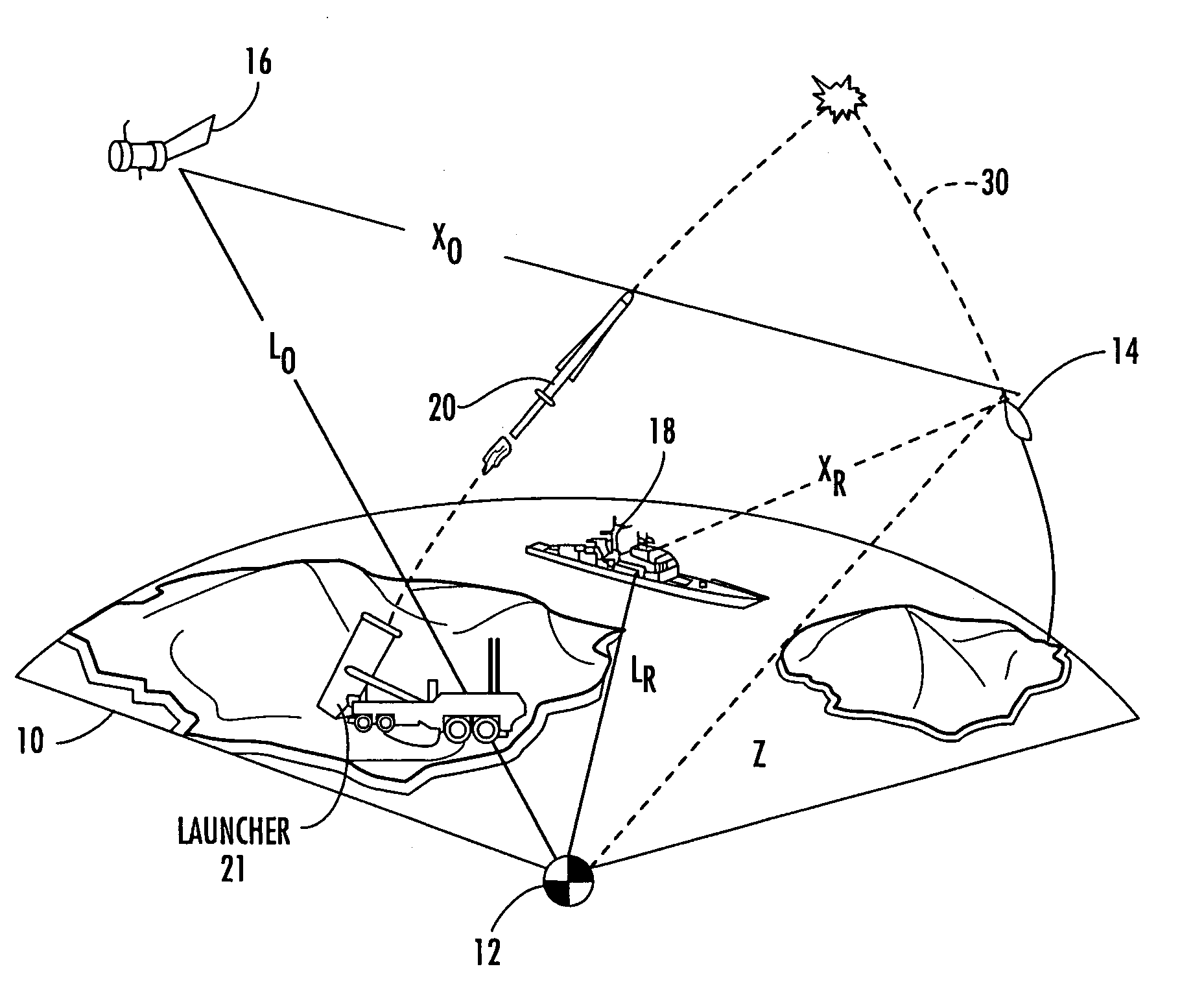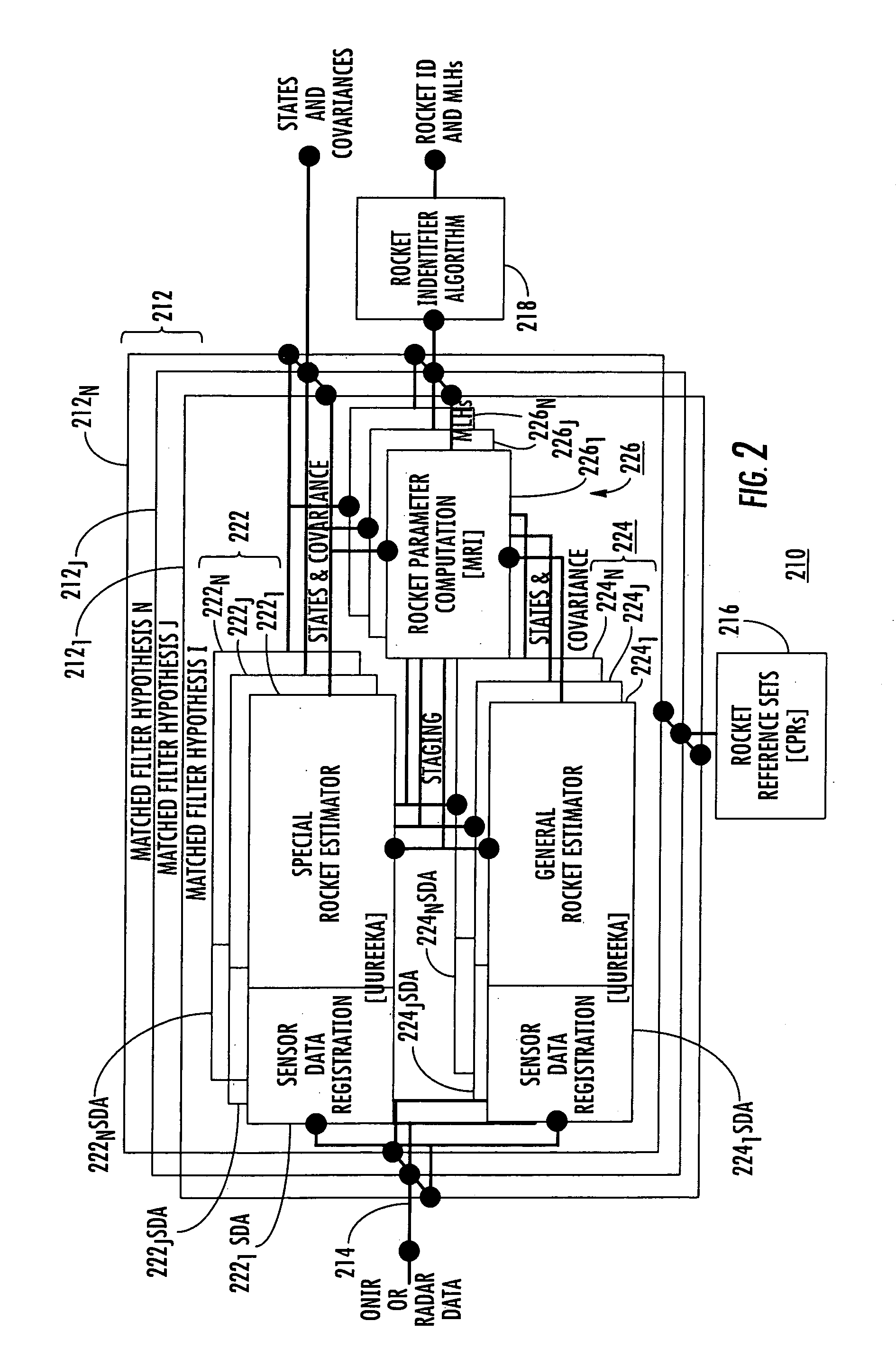Missile identification and tracking system and method
a missile identification and tracking system technology, applied in the field of identification and tracking of missiles, can solve the problems of not matching the templates, requiring a large number of templates to handle even one target, and becoming difficult to distinguish between a given target that is lofted and another target type that is depressed
- Summary
- Abstract
- Description
- Claims
- Application Information
AI Technical Summary
Benefits of technology
Problems solved by technology
Method used
Image
Examples
Embodiment Construction
[0010]FIG. 1 is a simplified diagram illustrating the locations relative to Earth 10 and the Earth's center 12 of a target 14, sensing spacecraft 16, shipborne sensing radar 18, and a land-based interceptor 20 using launcher 21 which may use the invention. In FIG. 1, the satellite 16 may include an overhead non-imaging infrared (ONIR) sensor, and X0 represents the distance from ONIR 16 to the target. Distance XR represents the distance from the shipborne radar 18 to the target, distance LR represents the radial distance from the shipborne radar 18 to the Earth's center 12, LO represents the radial distance between the Earth's center 12 and the ONIR spacecraft 16, and distance Z represents the radius between the target 14 and the Earth's center 12.
[0011]FIG. 2 is a functional block representation of a Missile Dynamics “Optimal” Tracking System (MDOTS) according to an aspect of the invention. MDOTS taken as a whole incorporates a multi-hypothesis matched filter arrangement that concur...
PUM
 Login to View More
Login to View More Abstract
Description
Claims
Application Information
 Login to View More
Login to View More - R&D
- Intellectual Property
- Life Sciences
- Materials
- Tech Scout
- Unparalleled Data Quality
- Higher Quality Content
- 60% Fewer Hallucinations
Browse by: Latest US Patents, China's latest patents, Technical Efficacy Thesaurus, Application Domain, Technology Topic, Popular Technical Reports.
© 2025 PatSnap. All rights reserved.Legal|Privacy policy|Modern Slavery Act Transparency Statement|Sitemap|About US| Contact US: help@patsnap.com



